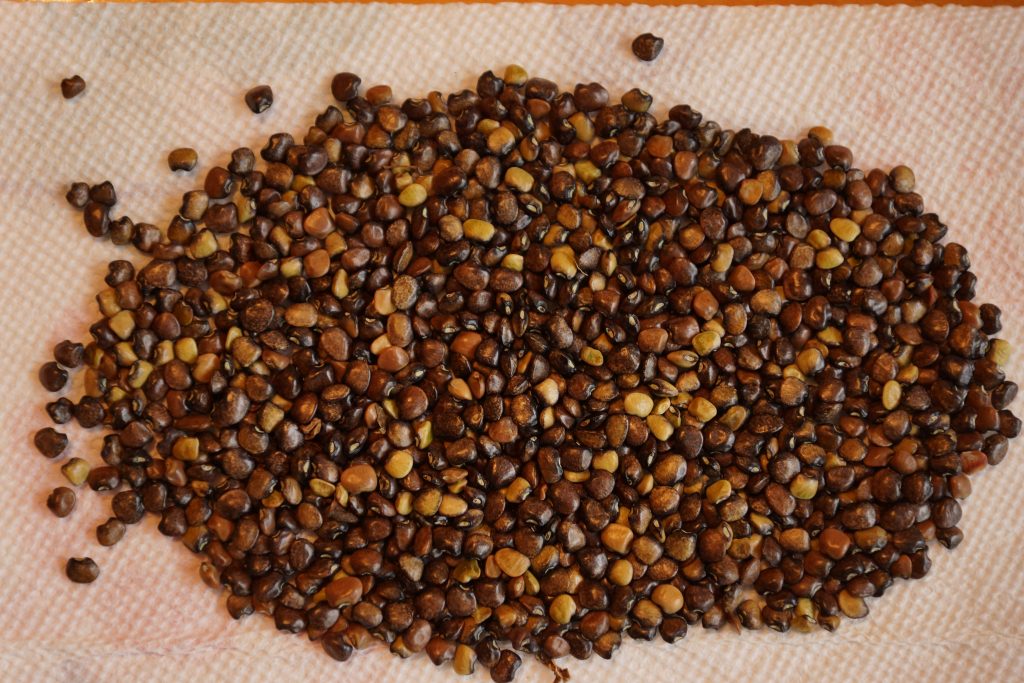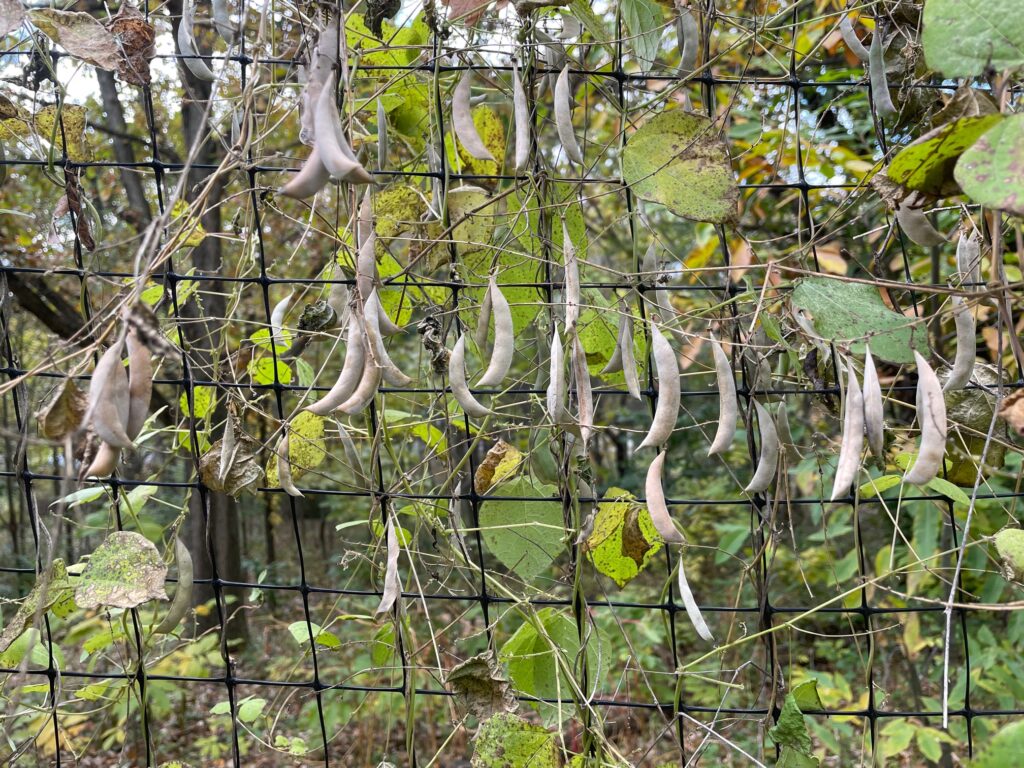Experience-Seeds-Knowledge-Plant Discoveries-Ecological Enrichment-Join Now Click Here!


The Perennial Bean
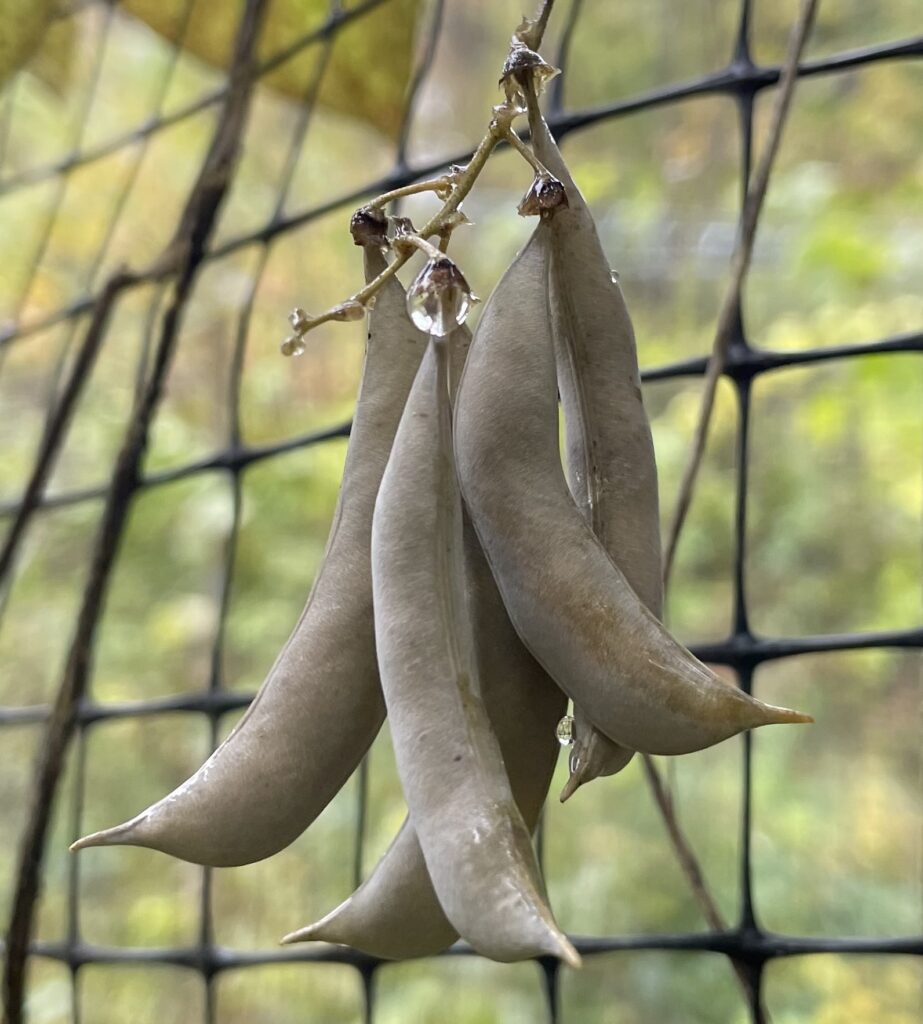
I love beans. It is my favorite protein source. I am particularly fond of red lentils as they are very digestible and quick to cook. When someone brought up lentils in one of my agricultural classes in the late 1970’s the professor joked, “What are those? Beans grown during lent?” He then followed up with he had heard from another student it was a good protein source. Beans were not on the radar as a protein source to any large degree but neither was turkey. Turkey was considered something you ate only during Thanksgiving. This has all changed and beans are now part of chips, crackers and burgers because of the demand for vegetable proteins that digest easily. Even outside of the vegetarian realm, beans were being used in many new and innovative ways. Legumes are on the top of protein sources now and even the U.S.D.A. loves the bean and not just the soybean.
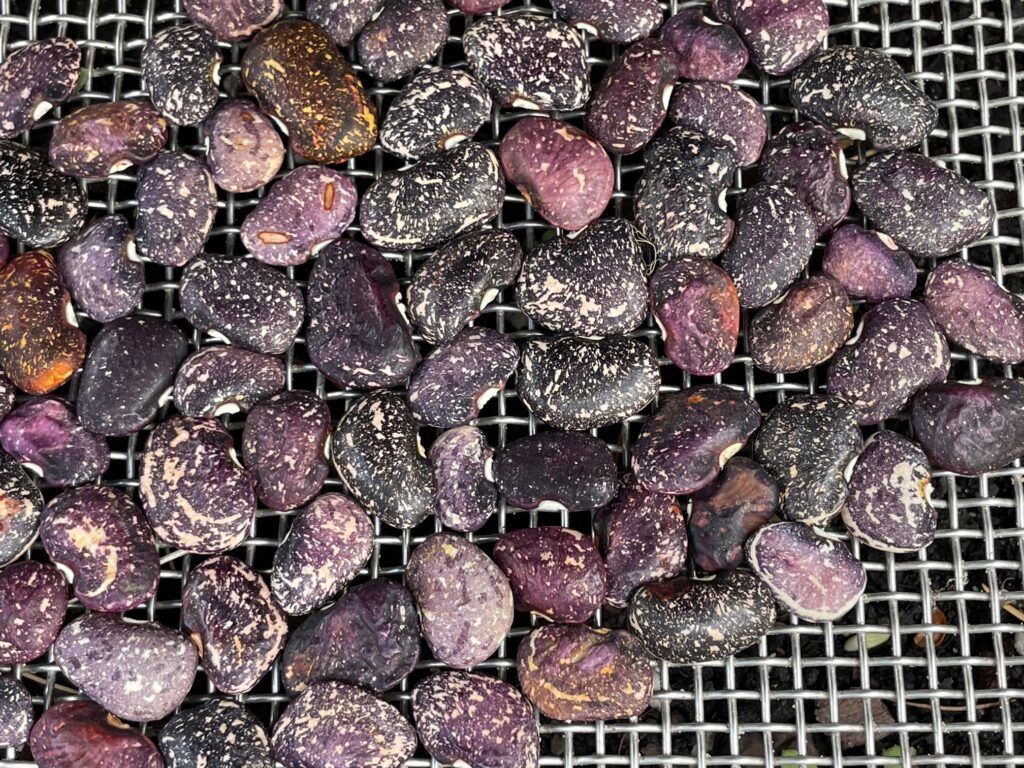
There is a species of perennial bean called thicket bean. It is only known as a plant indigenous to North America and not thought of as an edible bean let alone a new protein source. When I started growing it three decades ago, there were no sources for the seeds. I had received seed of it from author and writer Eric Toensmeier of Perennial Vegetables. It sat in the crisper section of a refrigerator in my barn for a couple of years until an intern joined the farm and we planted out the seed. We started with seven plants. For the next ten years I learned a lot about the thicket bean, but did not have enough to cook and eat. So I began wondering how it tasted and what its yields were or if I could make different hybrids of it in an easy way without hand pollination. Eric had mentioned in his book this had been done before and its close relationship to the lima bean. It turns out that this thicket bean road, was very easy to follow and a joy to travel. Here a few of the sights and experiences along the way.
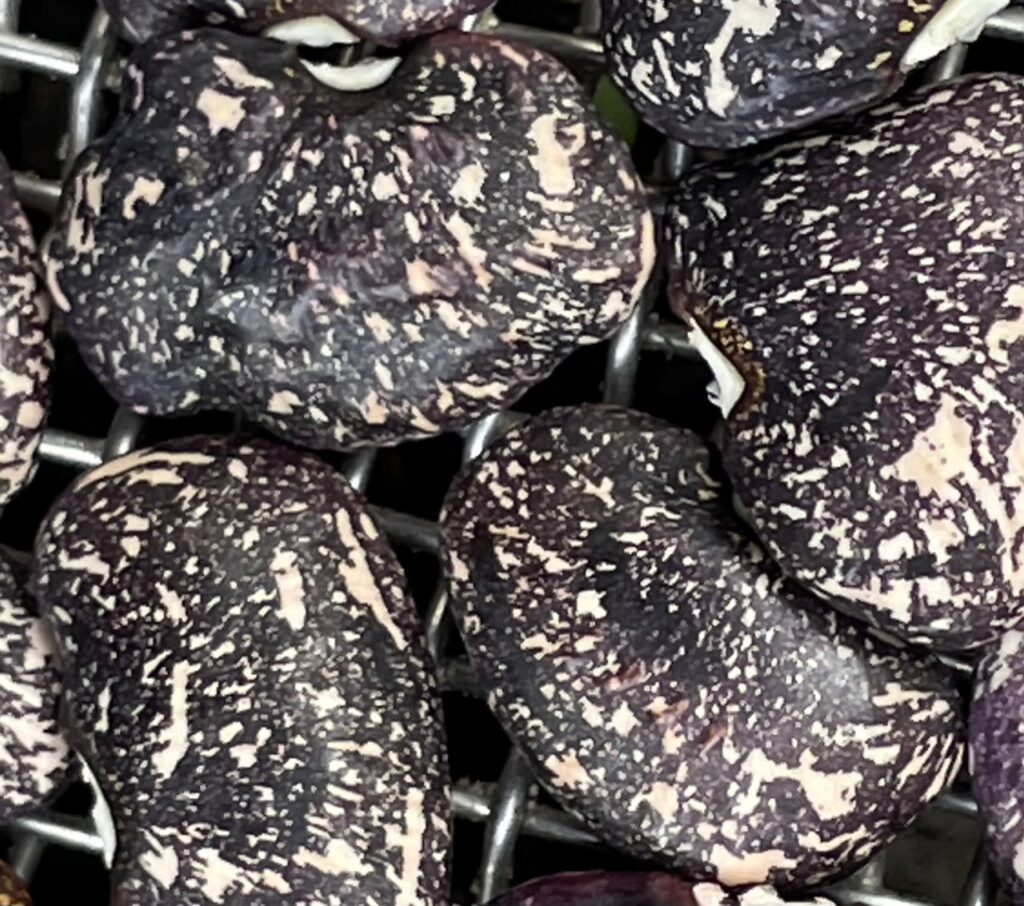
- The World’s Most Expensive Bean
Imagine taking a widely available food, grow it and soon discover it is super intensive and expensive to produce. That’s the thicket bean clocking in around five hundred dollars a pound. Currently it is only used as seed stock in certain native plant nurseries. Even at that price, from a labor standpoint and yield you are not buying a yacht with the proceeds from your love of perennial beans. Obviously if you are going to consume it or grow it for others to eat, you want the price of this lentil sized bean to be somewhere near the price of specialty beans. Specialty beans are grown and known in certain parts of the world where they were developed over time in a specific climate and soil. They may be a lentil or a soup bean of some kind. Many of these beans are passed down through the generations. Thicket bean occurred naturally in North America and only the non twisty pods were selected by early Native Americans before the advent of annual beans moved northward from the southwestern U.S., Mexico and parts of Central America. Some 9000 year old camp sites contained thicket bean pods in abundance. But it was not passed down or kept in cultivation that we know of. In Michigan, the thicket bean was found on an island in the Detroit River called Belle Isle in 1890. There was some thought that this ended up there during the Archaic period from 8000-10000 BC as a human introduction. As we all know beans cannot swim. These beans super power was in their very hard and shiny skins or coats as they do not require the driest of storage conditions and will remain in good condition for long periods of time without mold destroying them. Remember there was no way to store thicket beans like beans in the southwestern U.S. where the climate is radically drier. Unfortunately this particular isolated island strain was never seen again. Non-twisty pod selections that do explode the seeds outward or not you are basically looking at a wild plant starting from scratch. This partly explains the hefty price tag for production. Consumers don’t care though nor should they. Lets face it, your beans are too expensive to eat.
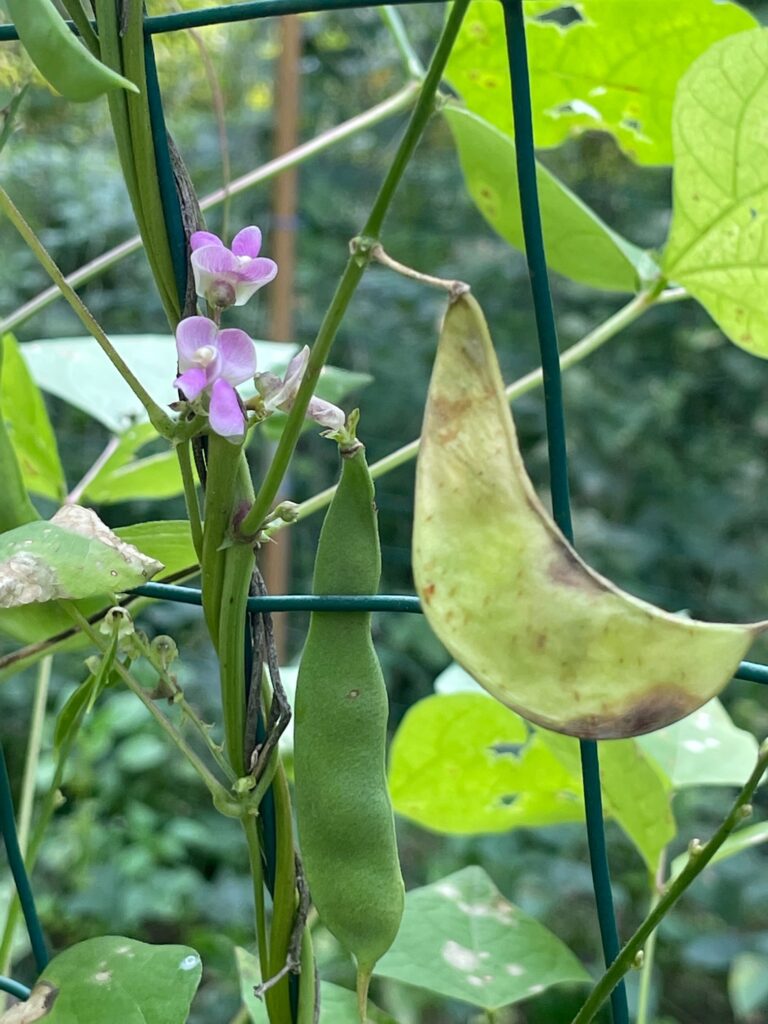
- What Are the Yields
In the ten foot tall trellis I had roughly 120 ft. length. I was able to get up to four pounds of seeds. This was the record set at the third year after planting. The second year roots we were able to get a little over one pound of seed. After the fourth year, my nursery satisfied the market for the roots and seeds and I slowed the production and replacement roots in the trellis system. My system was kind of high maintenance but I also used it to produce one year roots for resale on the same trellis. The roots will continue through year five or more but normally by year seven the roots are done and new plants need to be added. I am not sure how high it could have gone. Looking at the trellis, we were near the highest point in the fourth year. That is when the roots are the largest. It could be possible without voles and greater vigor the yields could easily double. I was using irrigation and lots of fertilizers. The plants did respond to this very nicely. I eventually went to an electric fence to prevent groundhogs and deer from consuming the foliage. They reduced the yields. There is some lost due to rust which formed on the leaves in high humidity summers. I found organic sprays for that. I would say everything equal, we could get to a ten year rotation easily. It would interesting to see the periods of five to ten year as I have not investigated that period very much. A lot of roots were done by year five in my system and needed to be replanted.
- How Do You Harvest
By hand. We would carefully place the pods in a broad wooden salad bowl so they don’t explode outward and away and without ricochet with the twisting seed pods. Since the pods all ripen at different times even on the same plant, the harvest window is over three weeks. This means picking over several weeks and depending on the warmth and dryness of the fall weather how often you have to go out and get those beans before they explode!
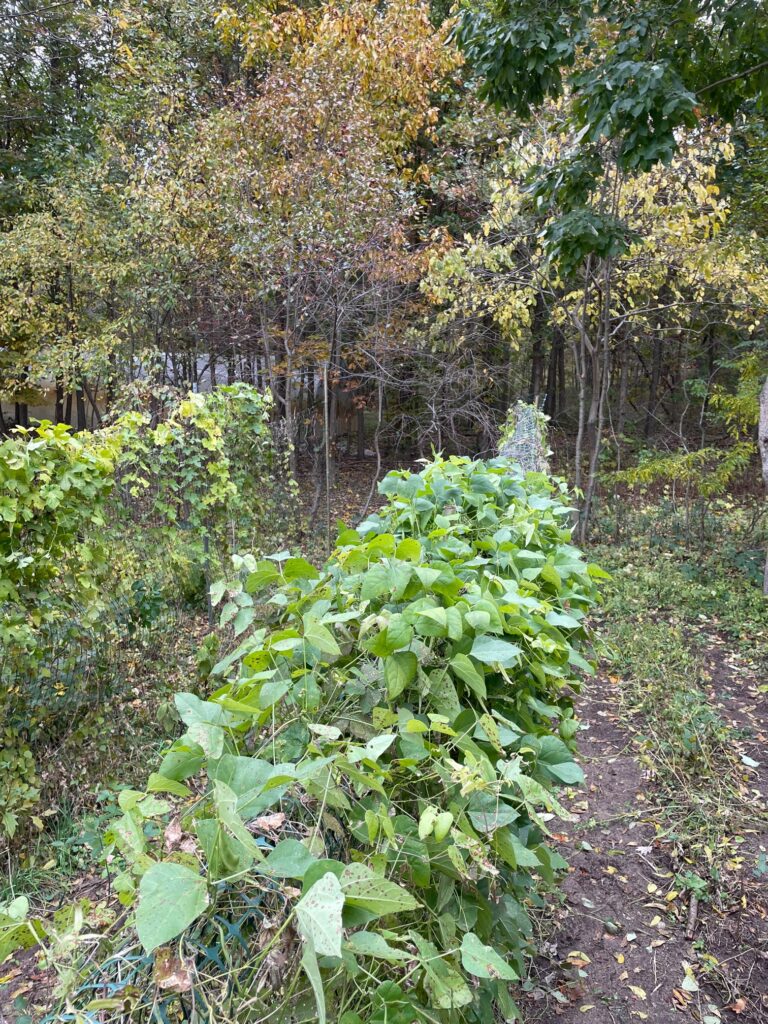
- How Do You Process
The pods are brought into the barn and put on covered screened trays to dry fully and then crack open and split ejecting the beans. Many will not split the first time through. The pod needs to be totally dry. They are put into the Dybvig seed processor which splits them much faster. They are then screened again and then let dry once again. This is repeated up to three times to split the remaining pods. Bean ripening season in the barn means there will be clicking sounds like a percussion instrument in the barn when the heater kicks on in the morning. Is that a waltz or a rumba? You’ll hear it all.
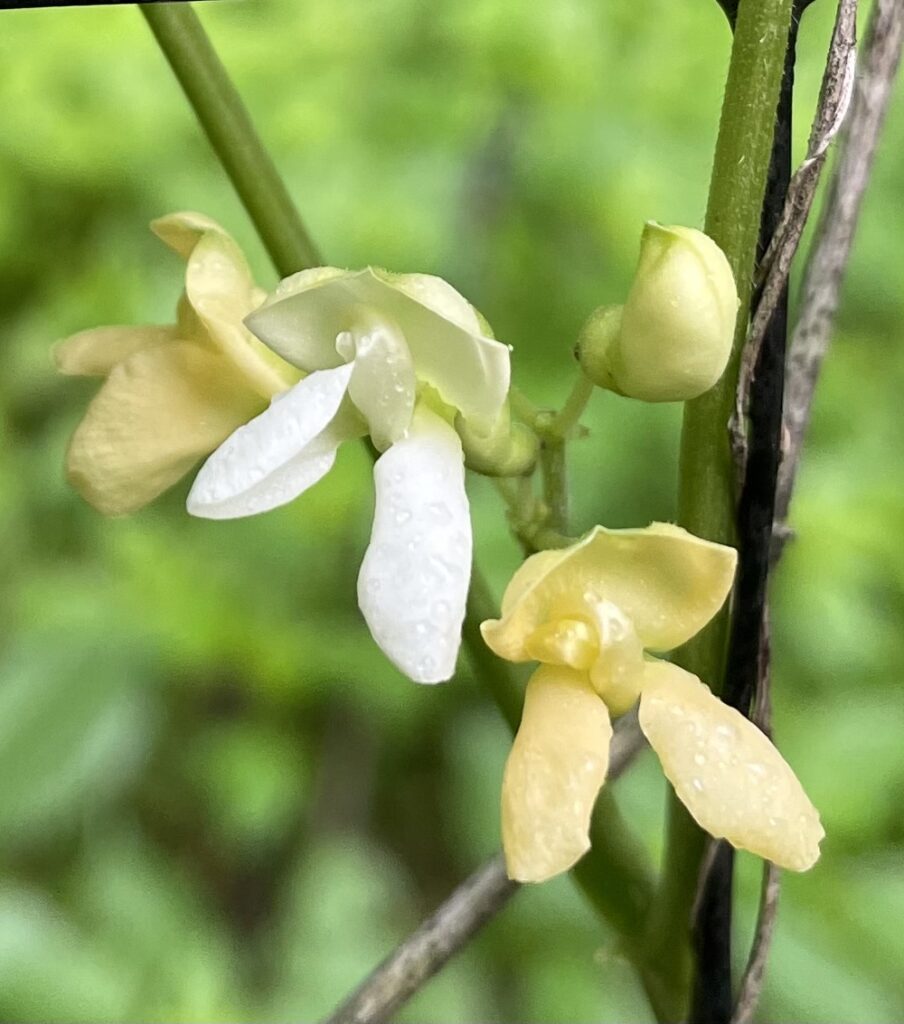
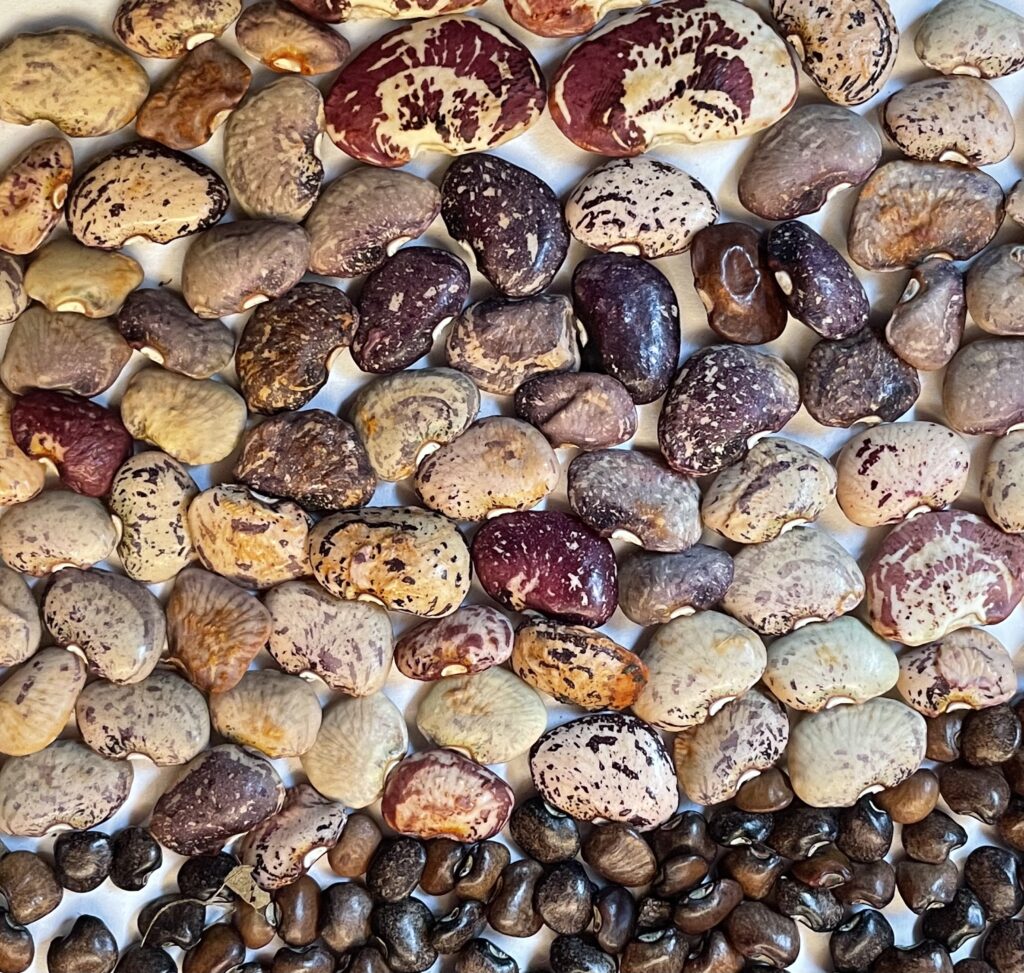
- Hybrids With Lima Beans
Very easy to do. Plant lima beans on the same trellis as established one or two year thicket bean plants about a month later than what the packet says. For me this was planting them in mid to late June or even July. This is to get the overlap of flowering needed. Thicket beans flower late in July and early August. The number and diversity of pollinators on thicket bean is very high. With lima beans not so much as the flowers are small and not as accessible to butterflies. But there are several hoover flies and bumblebees that will do both lima and thicket. It is not common to see carpenter bees on the limas but they love the thicket bean. There is one very tiny brightly colored bee that goes into both types of flowers. That is your hybridizer right there. There are several hoover flies that go for the lima too. It took me three years of observation off and on to zero in on the lima bean pollination because you just don’t see much. For a while I thought maybe the lima doesn’t need a pollinator to set beans. I was confused at the whole thing. After four years of doing this I discovered the pollination was off the charts and the yields increased. I used Travelers Heirloom lima with the twisty pod characteristic for the lima bean variety. I also used the speckled Christmas lima and the purple Bandt lima varieties. As far as I can tell they all worked but I like the Travelers Heirloom the best because they ripened early enough in my cloudy cool summers in southwestern Michigan. There are a few limas from Michigan too and I will try those at some point. Your next step is to save the lima beans and plant them the next year. Soon you will see pink flowered lima beans. These are the hybrids of the two species. Some will have a light pink cast or are kind of multi-colored. The normal yellow color of lima bean flowers leaves. Harvest the roots and see if the roots are solid or hollow. Give them a squeeze. The solid roots are usually perennial and can be grown again. This is the beginning of your perennial bean quest. Its a movie with a good ending.
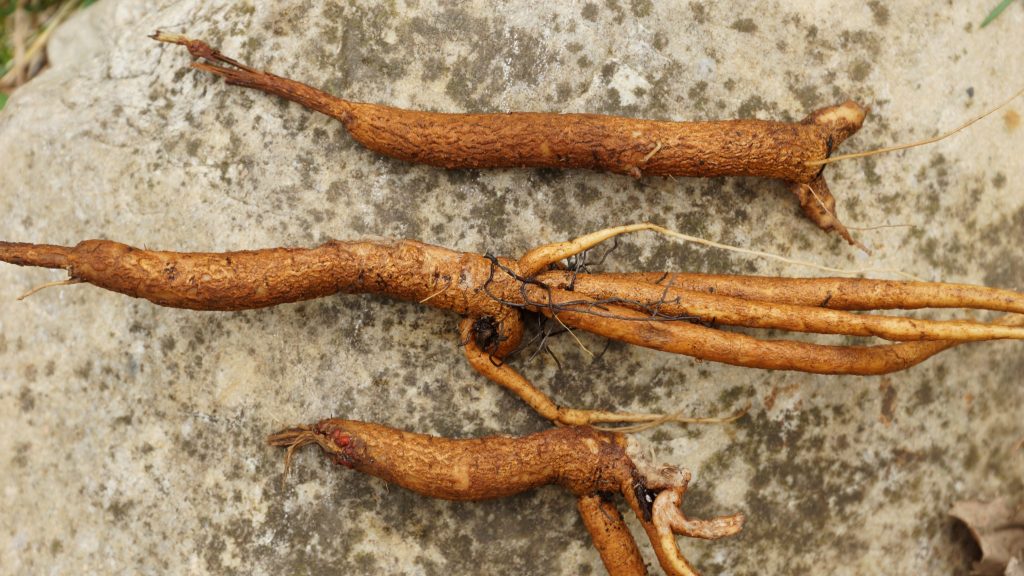
Wait. There is more! The next steps help you evaluate new types of smaller limas too. Just because it was not a successful perennial bean, it could be a delicious small easily cooked lima bean with heavy yields of small beans in dense clusters of pods. Please consider your perennial bean breeding project as a means to create even more diverse lima beans. This means you could improve the flavor, increase the yields and make it useful as a highly digestible protein source on a broad scale. It win-win for all. I see the lima as too big, too slow to cook and not universally liked by all. Why is that? It is the butter bean after all. So I do see a way to improve the soil over time, making a perennial bean or a series of annual beans with exceptionally deep roots, thick foliage and flowers that feed all sorts of honeybees and pollinators. Now we have three crops, honey and beans on a nitrogen fixing plant. The roots do have nodules too but not always. I have yet to figure that out. I think the lower nitrogen will kick in the nodules but I am guessing on that.

- A Bush Type Thicket Bean
Thicket beans much like tepary beans will produce smaller branched plants with heavy flowering. These will tend to grow only to three foot tall on the trellis compared to the usual 15 foot tall wild thicket bean. The yields on these smaller versions are very high and some will produce on one year plants. It appears some of these are actually annual in nature. In other words, the yields are so high that the plant crashes and the roots are no longer useful for another year. They break down. So it is possible to develop a new type of non hybrid thicket bean that you would grow without a trellis and harvest with a harvester like other beans or hand pick like other dry beans. This eliminates the trellis the same way other bush beans were developed over time through the selection process. For the thicket bean, it would just take some selection process. I am not sure what the percentage is, but if I had to guess with my seed stock it is around one plant per five hundred that has this characteristic. I am guessing in some ways because I was not focused on that. When I began growing the roots for resale, I did find several types with this characteristic that flowered heavily on developing new roots and one year roots. This provides an avenue for growing the beans in greater abundance than ever before producing a bean field without a trellis system. But at the same time, is it possible to have a perennial bean and how perennial is perennial if you did that?
Lets travel down this road together. Being there as well as bean there. It can happen. The thicket bean is our bridge to a healthy and prosperous perennial future.
